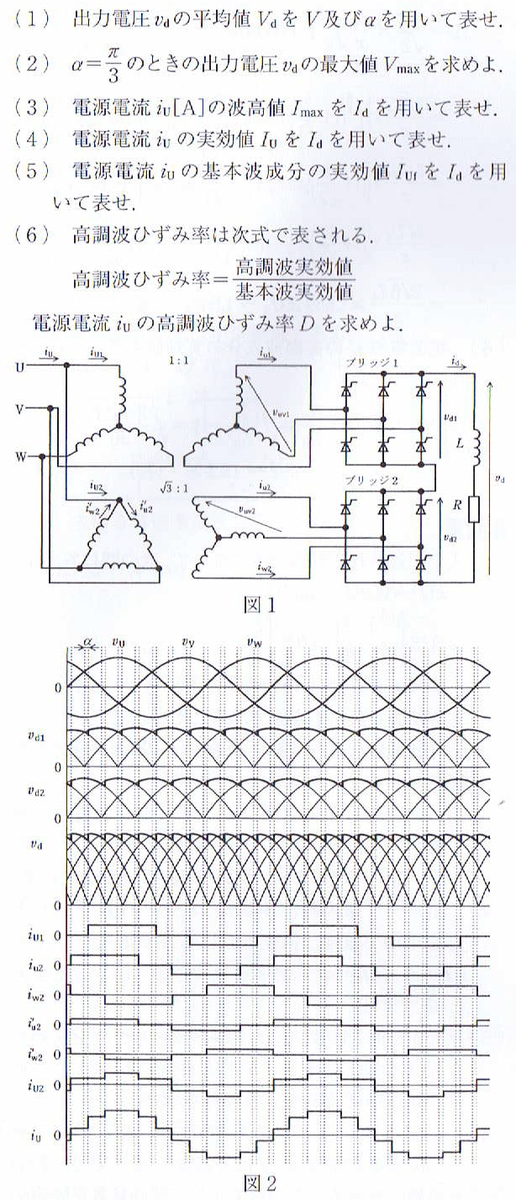

(1)変圧器二次側の線間電圧実効値はであるので、ブリッジ1の線間電圧を
とすれば、は
ごとの繰り返し波形で、
の期間では、
であるので、
の平均値は
の平均値は等しいので、
(2)変圧器二次電圧の波高値はであり、
結線と
結線の変圧器の間には
の位相差があるので、制御角
が
以下では
の最大値は、
である。制御角が
以上では
の最大値は余弦波状に低下する。したがって、
の
の最大値は、
なお、では、転流直後の電圧が最大となるので、そのときの出力電圧の和から求めることもできる。
(3)変圧器二次電流の波高値は、すべてである。
結線変圧器の一次電流
は二次電流
に等しい。一方、巻数比を考慮すると、
結線変圧器の一次の巻線電流
の波高値は
である。したがって、図2のように、一次電流
の波高値は
である。したがって、電源電流
の波高値は
(4)図2のように、電源電流は
の6値の繰り返し波形である。波形の対称性から、正の3値の二乗平均値の平方根(実効値)を求めると、
(5)基本波電流実効値をとすると、三相電源からの電力は抵抗
の消費電力に等しいので、
となる。したがって、
(6)高調波電流実効値は、であるので、高調波ひずみ率
は、
|
|

